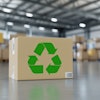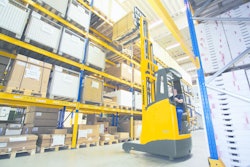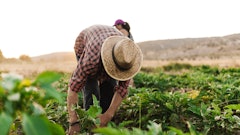The movement toward greener packaging has been an ongoing trend for almost a decade, according to an editor at GreenerPackage.com. Below are five quick tips for a more sustainable packaging design:
1. Take a life-cycle approach to package design. There are Life-Cycle Assessment (LCA) tools available to help package designers understand the environmental impacts represented by different packaging options.
Sustainability metrics and standards are still evolving, so pick a program, and stick with it. Using different tools to measure the same package may yield slightly different results. The key is to be consistent and make sure you are moving in the right direction in the core environmental areas that are of greatest concern to your company.
2. Evaluate each component of your package. Can changes be made to use less material without compromising product integrity? One successful example is all-natural sports drink-maker LIV Organic's move from a traditional PET bottle to one with Amcor's Groovy finish technology, which uses 31 percent less resin than a standard 38-mm finish. After LIV implemented the new design, the total weight of its 16.9-oz bottle was reduced 14.6 percent, from 36.8 g to 31.4 g. The technology also enabled the use of caps with 20 percent to 25 percent less resin.
Another example is GlaxoSmithKline Consumer Healthcare's Os-Cal calcium supplement. In 2010, GSK rolled out redesigned packaging that included a high-density polyethylene supplement bottle in a bold, full-body shrink-sleeve label capable of holding all product information. Scrapped were the product's secondary carton and an insert with outdated graphics. On an annual basis, GSK says the new package saves approximately 208 tons of paper, or 1,440 trees; eliminates nearly 330,000 lb of CO2 emissions (the equivalent of removing 30 cars from the road); and conserves about 2,052 million BTUs, or the energy used by 23 US homes.
Suppliers are continually innovating with containers, caps, labels, and other components that improve the package-to-product ratio, resulting in a smaller footprint, and oftentimes in a smaller price tag, as well.
3. Consider new alternatives for distribution packaging. New machinery and material technologies are enabling packagers to use fewer materials to create multipacks, bundles, and pallets, as well as create shelf-ready packaging that minimizes waste at the retailer level.
Several options exist for more sustainable stretch wrapping/palletizing, including machines engineered to optimize film use. Another method is the elimination of stretch wrap and hot-melt in favor of removable adhesives.
4. Look for opportunities to make your packaging reusable—where it makes sense. For example, in Costa Rica, Pizza Hut customers have been introduced to a new pizza box design that allows the box to be broken down into plates and a smaller box for leftovers.
5. Consider changes in your product. The best example of a product category that has undergone significant change to accommodate more sustainable packaging is household cleaning products.
Beginning with laundry detergents and rippling through other cleaner and chemical products, CPGs have turned to concentrated formulas to reduce the amount of water shipped from factory to retail shelf and to enable smaller package sizes. Perhaps the most compact of all: Method's 8X-concentrated laundry detergent formula can wash 50 loads per 20-oz bottle, and 25 loads per 10-oz bottle. Also popular in the cleaning products industry have been systems that combine concentrated product refills with reusable packaging.
Another lesser-known yet very innovative example of a product modified to affect changes in packaging is General Mills' Betty Crocker Hamburger Helper. Several years ago, the company reengineered the physical properties of the noodles within the meals to enable the design of a smaller carton size. The change resulted in a savings of 890,000 lb/yr of paper fiber, an 11 percent reduction in greenhouse gas emissions (GHGs), and the elimination of 500 trucks on the road per year.
For the complete list on sustainable package design, please visit GreenerPackage's website.
Source: GreenerPackage














